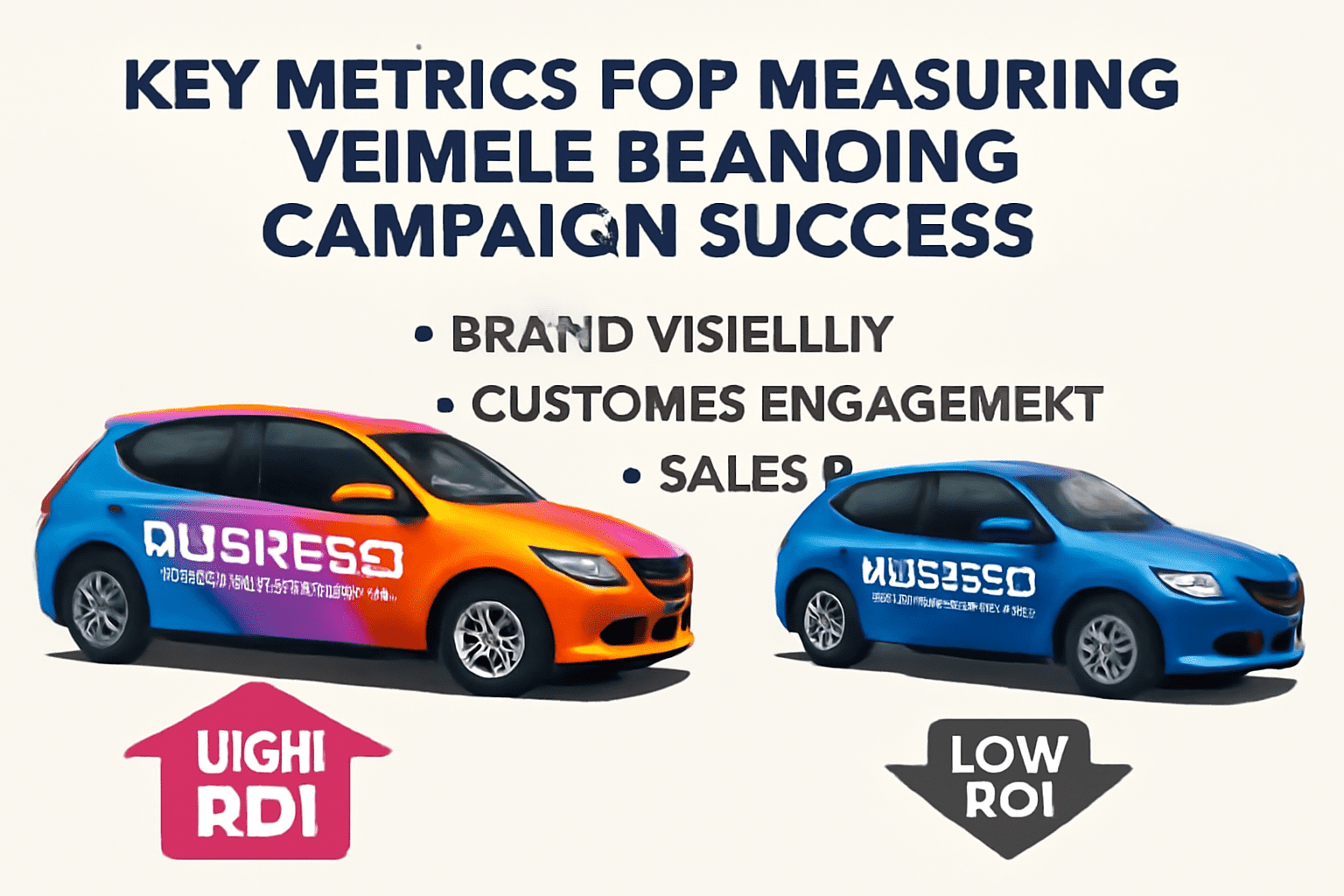In a world saturated with digital ads and social media noise, vehicle branding offers a refreshing, cost-effective way to advertise your business. Whether you’re using a full car wrap, magnetic signage, or custom car decals, car branding can turn any vehicle into a mobile advertisement.
But here’s the big question: how do you know if your vehicle branding campaign is actually working?
If you’re investing in car branding, you should also be able to track your return on investment (ROI). In this guide, we’ll break down how to measure the success of your vehicle branding campaign with real metrics, tools, and tips—so you know what’s driving real results.
Why Measuring Vehicle Branding ROI Matters
Too often, businesses treat vehicle branding as a one-time visual upgrade. But it’s much more than that—it’s a marketing strategy, and like any other strategy, it needs performance tracking.
When you measure success, you can:
-
Justify your investment
-
Optimize future designs
-
Track lead generation
-
Improve campaign strategy
-
Identify what’s working and what’s not
Let’s explore how to do it.
1. Set Clear Campaign Goals First
Before you can measure results, you need to define what success looks like. Your goals for your car branding campaign might include:
-
Increased brand awareness in specific local areas
-
More phone calls or website visits
-
Increased foot traffic to a retail location
-
Higher lead generation or sales
Once you know what you’re aiming for, it’s easier to track the metrics that matter.
2. Use Tracking Phone Numbers or QR Codes
A simple and effective way to track the success of your vehicle branding is by using a unique phone number or dedicated QR code displayed on the vehicle.
How It Works:
-
Set up a call tracking number (different from your standard number) that forwards to your business line.
-
Or create a custom QR code that links to a special landing page or form.
-
Track how many calls, visits, or scans come through those specific sources.
📈 This allows you to directly attribute leads or traffic to your branded vehicle.
3. Create a Branded Landing Page
For businesses that rely on website visits, consider directing users to a custom URL displayed on your vehicle.
Example:
Instead of your main homepage, use:
www.yourbrand.com/car
Use Google Analytics or tools like Hotjar to monitor:
-
How many visitors come to the page
-
How long they stay
-
How many convert into leads or customers
You can even A/B test your landing page to see what message or design drives better results.
4. Ask Customers How They Found You
Sometimes, the old-fashioned way works best.
-
Train your staff to ask new customers how they heard about you.
-
Include a “How did you hear about us?” dropdown on your contact forms, with options like:
-
Saw branded vehicle
-
Vehicle wrap
-
Company car
-
Over time, this feedback will give you qualitative data to support your vehicle branding ROI.
5. Use GPS & Route Tracking (Fleet Branding)
If you operate multiple branded vehicles, use GPS software to track where your vehicles go and how much time they spend in high-traffic areas.
Why it matters:
-
You can match impressions to neighborhoods or routes.
-
Helps plan more strategic coverage in high-value zones.
-
Combine GPS data with local lead spikes to identify what routes are working.
Popular tools include Samsara, Verizon Connect, or any GPS system with analytics.
6. Monitor Social Media Mentions
Well-designed car branding often gets noticed—and even shared. Keep an eye on:
-
Instagram tags or stories
-
Facebook check-ins or mentions
-
TikTok videos featuring your branded vehicle
Use tools like Google Alerts, Mention, or Brand24 to track online buzz generated by your vehicle branding.
7. Impression Estimates
Industry studies show that a branded vehicle can generate 30,000–70,000 daily impressions, depending on your location, traffic, and time of day.
While not exact, you can estimate exposure by:
-
Tracking the average miles driven per week
-
Using a standard CPM (cost per thousand impressions) model
-
Comparing to traditional ad reach (e.g., billboards or newspaper ads)
This helps you visualize how many people are seeing your car branding daily or weekly.
8. Lead & Sales Uplift Comparison
If you’ve been tracking leads and sales for a while, compare the before-and-after performance:
-
Leads before vehicle branding
-
Leads 1–3 months after branding
-
Include seasonal trends to avoid misinterpretation
Look for spikes in local inquiries, walk-ins, or service requests that align with the launch of your car branding campaign.
9. Photo Documentation & Brand Visibility
Take regular photos of your vehicle in action—parked at job sites, events, or even during delivery. This helps you:
-
Track brand consistency
-
Spot design wear and tear over time
-
Build content for your website or social media
Plus, real-life visuals of your branded vehicle enhance trust with potential customers.
10. Customer Recall Surveys
After a few months of running your vehicle branding campaign, consider a survey for your existing or new customers.
Ask questions like:
-
Have you seen our branded car recently?
-
Did it influence your decision to contact us?
-
What did you notice about it?
This gives you insights into how memorable and effective your branding actually is.
Conclusion
In 2025, car branding isn’t just a creative design choice—it’s a powerful marketing tool that works 24/7, wherever you drive. But to get the most out of your investment, you must track and measure its success just like any other campaign.
From unique tracking numbers and QR codes to customer feedback and website data, there are many ways to measure your vehicle branding ROI. When tracked properly, it becomes easy to prove that your branded car is more than a vehicle—it’s a high-performing mobile billboard that drives real business results.
So don’t just brand and forget. Measure, improve, and let your vehicle do the marketing while you focus on running your business.



